President's Approved Goals 2022-2023
Scroll Down for Page Content
CONTACT DETAILS
President's Office
PresidentsOffice@BristolCC.edu
774.357.2298
777 Elsbree Street
Fall River, MA 02720
D210a
UPCOMING EVENTS
Select a 2022-2023 strategy box below for details:
Strategy I: Academic Innovation
Advance an engaging holistic teaching and learning environment resulting in a seamless student experience that prepares them to embrace life's opportunities.
Objective 1
Program and curriculum review and alignment based on Labor Market Data Action Plans.
-
- Review top industry opportunities as identified through our Labor Market Data, deans and the strategic planning process.
- Develop a defined pathway template for every program including stackable credentials, career options, transfer options.
Objective 2
Develop a strategic enrollment plan that prioritizes our markets and activities.
-
- Identify the supports needed for each target market and ensure that representation exists at campus locations based on enrollments.
Objective 3
Develop a plan that outlines the processes and systems needed to support an adult learner model.
-
- Prioritize and customize enrollment management initiatives and student services to support adult learners.
Objective 4
Develop a new model and process for course scheduling.
-
- Implement course scheduling software.
Objective 5
Promote more meaningful student interactions to enhance the student experience.
-
- Standardize data collection and assessment within advising to better track student trends.
Strategy II: Equity and Student Success
Shared responsibility for the success of our students and employees by improving equity-mindedness and ensuring institutional support that lessens equity gaps.
Objective 1
Identify and expand the existing infrastructures that best support BIPOC and Latinx students.
-
- Explore holistic admissions and enrollment processes for all students.
- Provide professional development to employees to better understand racial trauma and offer supports to students, faculty and staff about racial trauma.
Objective 2
Develop and define best practices that enhance the educational experience for BIPOC and Latinx students.
-
- Increase the use of High Impact Practices (HIPs) in all programs, particularly those that enroll high numbers of BIPOC students.
- Identify best practices for assessing culturally relevant and equity-minded teaching and learning.
Objective 3
Develop a retention and recruitment strategy that increases the number of minority (employee) candidates and their longevity at the college.
-
- Develop a communication strategy that helps minority candidates identify and appreciate higher education as a viable career pathway.
- Develop plans to increase the sense of belonging of our minority employees through groups like the equity council, Racial Equity and Justice Institute (REJI) and the Employee Resource Group (ERG).
Objective 4
Increase equity core competencies by ensuring that all employees and students receive equity and social justice training.
-
- Implement the equity core competency training model for all employees.
- Engage deans and faculty to include an element of race, ethnicity and gender exploration in their field of studies.
Strategy III: Organizational Excellence
Create a culture of innovation through improved processes and collaboration, modern technology and ongoing professional development to support student and employee success.
Objective 1
Develop the process and tools needed to support an effective enrollment pipeline for onboarding students.
-
- Refine ways to use SLATE to communicate with our targeted student groups.
Objective 2
Define a strategy for our campus locations focused on community and partnership development.
-
- Identify which courses, certificates, corporate training, ESL and ESOL programs should be offered at which location based on changing community/market needs.
Objective 3
Align the efforts of Economic and Business Solutions with Academic Affairs (AA) and Student Services Enrollment Management (SSEM).
-
- Develop a plan to cross-train staff to be able to inform partners about all our available programs/services.
Objective 4
Develop a plan to enhance online learning.
-
- Expand customized support services for online students.
Objective 5
Develop a more technology driven organization that provides resources, tools and training for students, staff and faculty to become more proficient in their technology skills.
-
- Develop a technology support portal for students and employees.
Strategy IV: Partnerships
Collaborate with educational institutions, alumni, industry and community partners to increase educational attainment and support the talent pipeline to enhance opportunities in the region.
Objective 1
Expand the Early College Programming and infrastructure as a strategic enrollment pathway.
-
- Expand early college programs in Attleboro and Taunton.
Objective 2
Create a pipeline between business and industry partners to provide relevant workforce information.
-
- Develop events with industry partners to explore their relevant long-term industry needs.
Objective 3
Develop a process for grant development and management within Economic and Business Development, Development Office, SSEM and AA.
-
- Align the grant development process with the strategic plan and identify the data and ongoing supports needed for each new and existing grant.
Objective 4
Implementation of the new advisory board system.
-
- Update and operationalize the advisory board system.
- Develop a common portal designed to share member list information, agendas and other work being done by the advisory boards.




